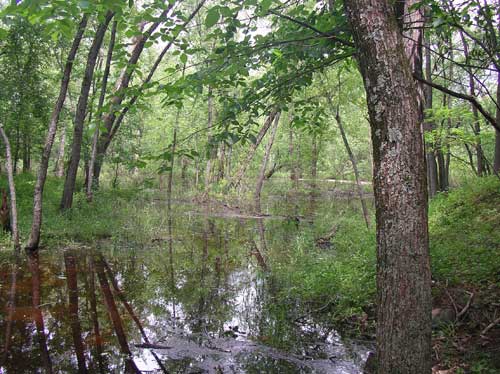Floodplain Woods
What are floodplain woods?
This type of woods occurs in the floodplains of rivers. Tree species vary, but may include silver maple, river birch, green and black ashes, hackberry, swamp white oak, and eastern cottonwood.

Black willow, basswood, red oak, and red maple may also occasionally be found in these forests.
What maintains the woods?
In general, the tree and plant species in this community are adapted to spring floods and wet soils. More specifically, the sprawling floodplains along Wisconsin’s largest rivers often consist of terraces at different elevation levels, which are subject to different degrees and duration of flooding.
These varying flood regimes, in turn, support a mosaic of species. Species that can survive the most frequent, severe, and long-lasting floods are found on lower terraces, while those that tolerate only infrequent flooding grow in the upper terraces.
How do I recognize them?
These woods are located in the floodplains of large rivers.
What plants and animals occur in floodplain woods?
A great variety of wildflowers and grasses grow in floodplain woods, because slight changes in elevation lead to big differences in plant habitat.
Among the more striking herbs of this community are cardinal flower, fringed loosestrife, and green dragon. Common plants include wood nettle, stinging nettle, green-headed coneflower, many species of sedges, and native grasses such as common wood reed, silky wild rye, and white grass. Buttonbush, an easily identifiable shrub, appears on the margins of very wet spots.
Birds of floodplain woods include the cerulean warbler, Kentucky warbler, prothonotary warbler, red-shouldered hawk, rusty blackbird, solitary sandpiper, yellow-billed cuckoo, yellow-crowned night-heron, and yellow-throated warbler. The Eastern massasauga rattlesnake, four-toed salamander, and wood turtle can also be found.
